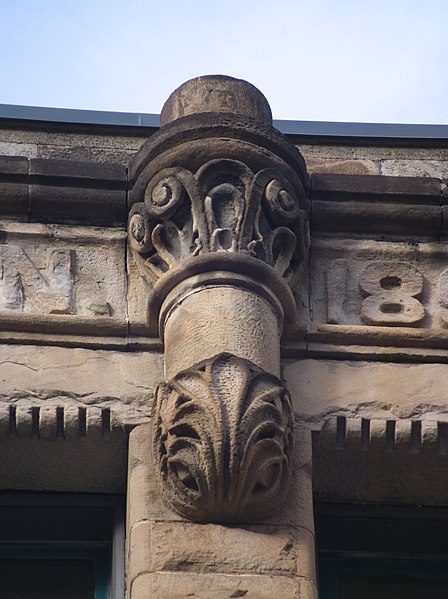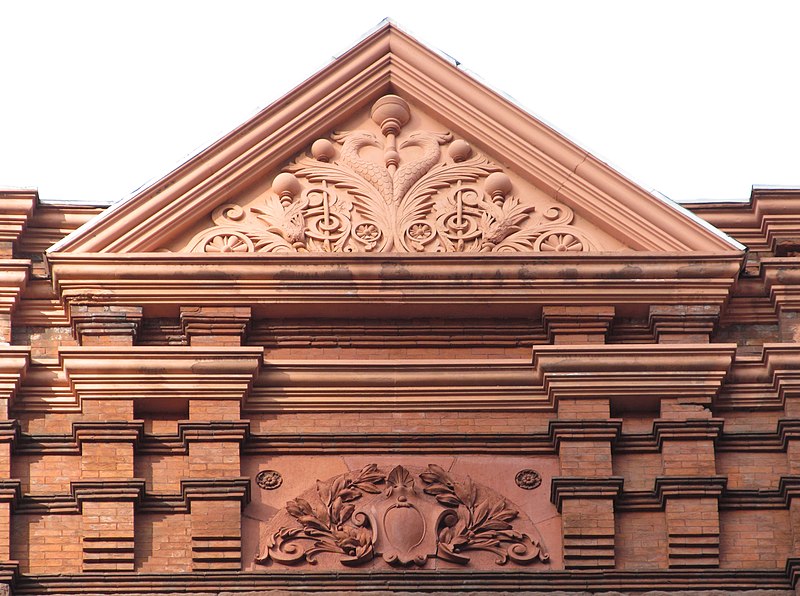
Taken on film in 1999. Note the bus coming toward you; apparently old Pa Pitt has been taking bus-coming-toward-you pictures for at least twenty-three years.

The Maginn Building was put up in 1891, just three years after H. H. Richardson’s Allegheny County Courthouse opened. Even before the courthouse was finished, it had already created a mania for the “Richardsonian Romanesque” style in Pittsburgh, and the versatile Charles Bickel was happy to come through for any client who wanted an impressively Romanesque building.





This building was put up in 1886, and in 1892 a sixth floor was added. It appears that the pediment was from the original construction, moved up one level in 1892; the ornamental scrolls on the fifth floor would have accented the pediment very nicely.

As we often see in Victorian commercial buildings, what might appear to eyes trained on modernism as a cacophonous racket of detail turns out to be carefully organized, more a fugue than a racket. There are some interesting little outbreaks of randomness, however. Here are some of the delightful details you can pick out if you stand across the street from the building.






The German National Bank Building, which later took on the name “Granite Building,” was designed by Charles Bickel. It opened in 1890 as one of the wave of Romanesque buildings that followed H. H. Richardson’s County Courthouse. Mr. Bickel pulled out all the stops and used every texture of which stone is capable. To modern eyes it may almost look random, but after one’s eye has been trained to the Victorian Romanesque, the care with which the elements are balanced becomes apparent.

The exceptionally ornate front of this building is marred only by the modernist excrescence on the ground floor, which until recently was a McDonald’s restaurant. Something more tasteful could be done with that storefront fairly easily. The rhythm of the upper floors is just about perfect, and the carved and incised details are worth stopping to appreciate. (The upper floors are a bit blurry in this picture, which is attributable to low light on a drab day.)